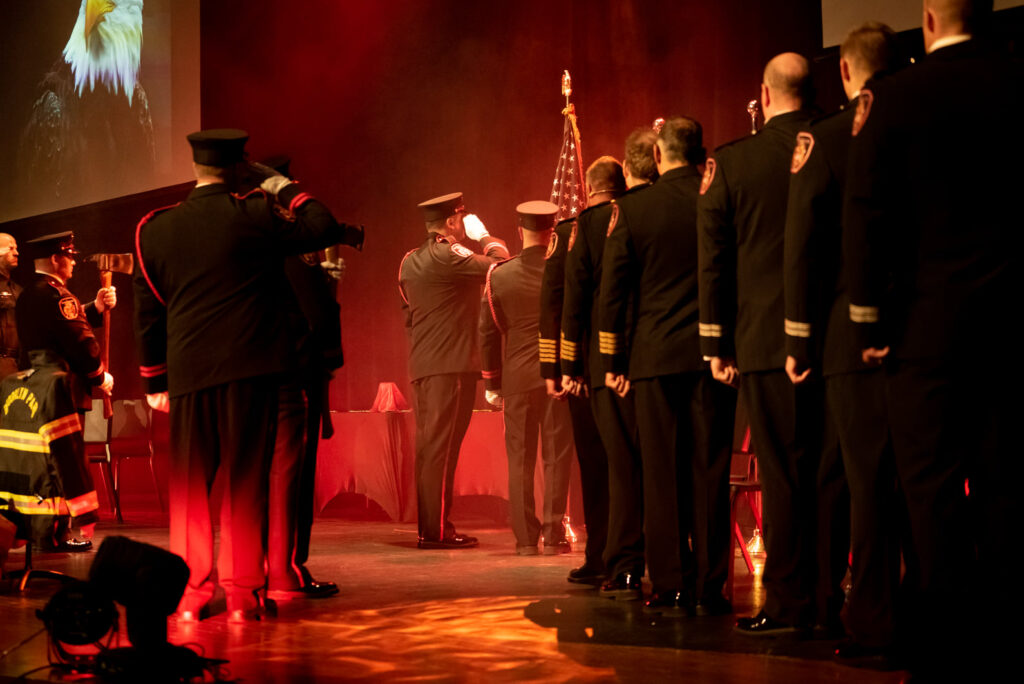As a firefighter progresses through the ranks of organizational management, the layers of responsibility become heavier and arguably more complex. The insignia pinned on the collar brass signifies the formal rank of the position; those in our profession have an inherit understanding of the responsibilities with each step of the paramilitary structure that is deeply rooted in fire service tradition. A lieutenant or captain, for example, have direct, front-line management responsibilities of a single company, station, or program. Battalion, district, deputy, division, or assistant chiefs inherit more complex responsibilities that are more strategic in nature. Budgeting, accounting, performance management, data analysis, and hiring are just some of the items that chief officers begin to handle as they progress higher in their organization. Often serving as a senior department director, the fire chief is the most senior person, serving as the chief executive officer of the organization and is responsible for the strategic direction of the organization.
The omission of the word leadership in the previous paragraph was intentional. You don’t have to hold an officer title to be a leader; although I would certainly argue that one needs to be a leader to be an officer. This is not to be confused with popularity. I have met many popular firefighters, but I wouldn’t even trust them leading me to fight a defensive fire on a smoldering porta-potty let alone a raging inferno. You can’t claim to be a leader if no one is following. I have never seen a championship football team where only the coach is standing on the field; it requires the efforts of every player to be successful.

Just like football, the fire service is a team sport. Every member of the team plays an important role. Their moves are well calculated; preplanning both on and off the field is combined with rigorous rehearsal. A star athlete must have the willingness and drive to prepare their body for most physical demanding job which is often carried out in only a matter of seconds. Once the play is underway, there is no going back. The players must react based on not only the movements of their own team but more importantly their opponent. When the play is done, the team huddles again to come up with a new plan. After the game, the coaches and players get together to review their performance and to make improvements for the next game. Even when not on the field, the athlete is in a constant state of preparedness. Hours, days, weeks, and even months of training go into preparing the athletic for the next game.
Behind the scenes are thousands of people working tirelessly to support the team, their players, and fans. This includes coaches, trainers, janitors, human resources, guest services, media and communications, drivers, security, and engineers. Just to name a few.
Every person – from the star player to the support staff around them – is incredibly important to the success of the team.
As a fire chief, the most important asset to your team are your players. Modern fire trucks, stations, radios, and all of the tools we use on a daily basis are important, they are essentially meaningless until you first have a strong team. The success of the team is dependent on the performance of each individual member. To build a successful team, you first must select the best players. Their character, drive, passion, commitment, and alignment with your team’s values will enable the coaches and trainers to develop them into star athletes.
As I approach 25 years of service as a firefighter, I have had the opportunity to serve at every level within the organization. I vividly remember taking to the field as a new firefighter and gaining experience and knowledge from the veteran players around me. While I may not be on the field running the play, I consider my role today to be even more important than ever.
I have the best members on the team.
Note: this article appeared in the Summer 2022 issue of the Minnesota State Fire Chiefs Association magazine. For other articles by leading fire service professionals, join the MSFCA today! Magazine memberships are available!